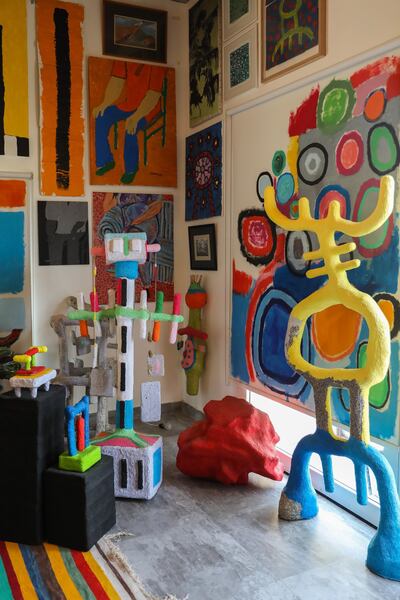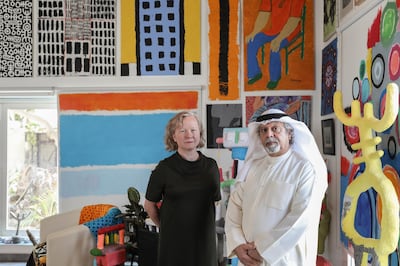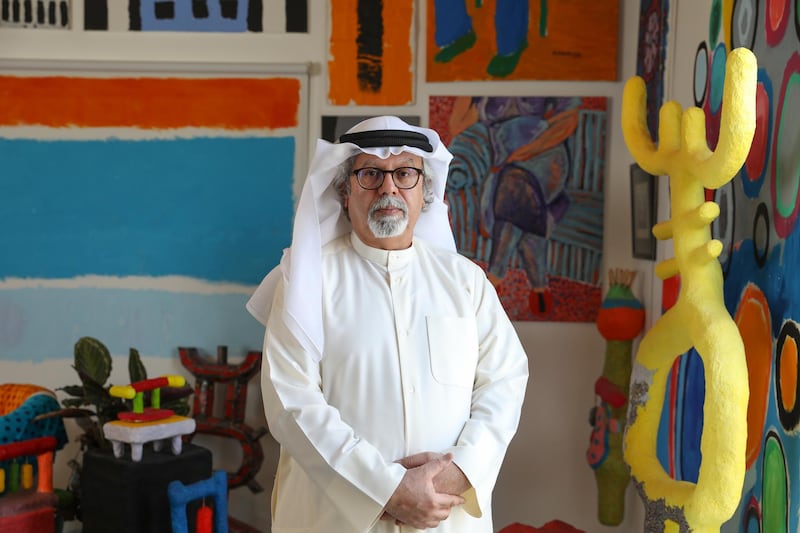Emirati artist Mohamed Ahmed Ibrahim will represent the UAE at the 59th Venice Biennale in 2022.
Ibrahim is one of the UAE’s most prominent artists, part of the avant-garde that included Hassan Sharif, Abdullah Al Saadi, Hussein Sharif and Mohammed Kazem. Together, they led the contemporary art movement in the UAE in the late 1980s up until the 2000s.
Born in 1962, Ibrahim’s work speaks to his profound connection to the natural land, specifically his home of Khor Fakkan. This translates to his use of materials such as clay, branches and stones, as well as the primordial structures and forms that take shape in his sculptures and paintings.
The biennale will run from April 23 to November 27 2022, and Ibrahim says that his participation in the National Pavilion UAE is both an honour and a responsibility. Currently, he is working closely with the exhibition’s curator Maya Allison, executive director and chief curator of the New York University Abu Dhabi (NYUAD) Art Gallery, and the pair are discussing themes and production.
“We have the space and the tools. What’s important now is the message itself,” says Ibrahim. “I am thinking about how to show my culture and present it to people from other nations. All the cultures in the world will be there, so I am thinking about how to start this dialogue between us and other cultures.”
His connection to nature
The artist spends 10 to 12 hours every day working on his art. As part of his process, he goes into the mountains on walks or camping trips to gather ideas and materials from the landscape. His connection to nature began in his teenage years, after picnics and trips gave him a newfound appreciation for his surroundings.
“When I looked at the mountains from far away, I used to see them as ugly, sharp and strong,” he recalls. “But when I got closer to them, I saw that there were a lot of colours inside, and I saw them as kind, not aggressive.”

“This was the beginning of my special relationship with nature, when I was 16 or 17. I began to deal with it as if it were a human being, as if there was a soul in it. I started to become a friend to it. When I'd go into nature, I would use natural materials like clay, branches, leaves, grass, stones, but I wouldn’t break the branches. I didn’t bother the creatures in the mountains. I just used the materials that I found in the land.”
Ibrahim’s body of work not only includes land art made in the mountains, but also abstract sculptures moulded from papier mache that bear elements of nature. Their forms mimic something ancient, even primal – shapes, arcs and lines that connect and intersect to spell out unknown symbols.
His geometric motifs are drawn from ancient engravings, including ones that depicted men on the backs of horses, which he discovered exploring the Hajjar mountains. The artist has incorporated these symbols into his work, more recently stripping them down to more minimalist forms – just lines and circles – and making them more abstract.
Distilling environments and objects into their essential form is part of how Ibrahim sees the world. “If I see, for example, three people sitting around a table, I can see the table as a square and the people as circles, and then I just connect them with lines. When I look at the things that surround me, I see them as that. The shapes come with everything,” he says.
As the project for the Biennale begins to take shape, Allison reveals that she and the artist are examining his works over the years. “He is prolific, and our main conversation to date is how best to approach this incredible body of work, as well as what possible new approaches he might want to take – he is incredibly curious about the world, and open to developing new approaches to his practice,” she said in a statement.
She describes his work, particularly his integration of land art into his sculptural practice, as having a “distinct visual style”, one that is “singular and instantly recognisable”.

The artist nominated Allison to be the curator for the Venice Biennale exhibition, marking a new approach for the National Pavilion UAE, which previously selected the curators first. The two have worked together on a number of shows in the past, including NYUAD Art Gallery’s But We Cannot See Them: Tracing a UAE Art Community 1988-2008.
Considering his role in the art scene, Allison describes Ibrahim as “among the most active artists working in the UAE”. She adds that he has “mentored later generations of artists, and plays an active role in the growth of the UAE’s art community".
With Ibrahim’s selection for the National Pavilion UAE, the artist’s place in the country’s art history is further cemented.
In 2018, Sharjah Art Foundation celebrated him with a retrospective titled Elements, featuring works from across three decades.
His work has also been acquired by major institutions, including the British Museum, Centre George Pompidou, Sharjah Art Foundation, Art Jameel and Barjeel Art Foundation.






